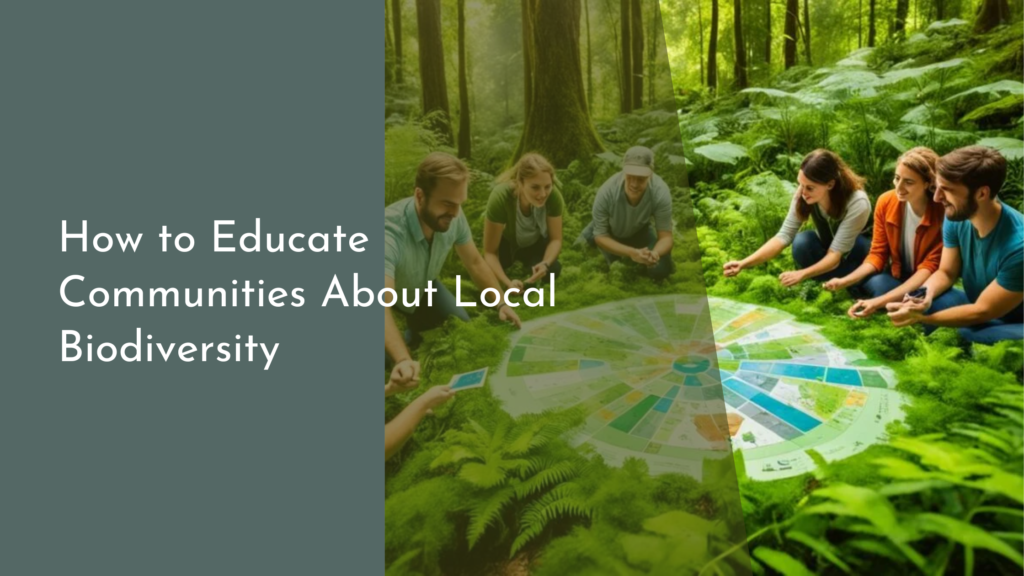Building Biodiversity Corridors for Pollinators
In a world increasingly dominated by urban landscapes and agricultural monocultures, the plight of our pollinators—bees, butterflies, birds, and other essential species—has never been more pressing. Biodiversity corridors serve as lifelines for these creatures, creating interconnected habitats that support their survival and flourishing. By establishing these corridors, we not only enhance the resilience of pollinator populations but also enrich our own ecosystems and agricultural productivity. Join us in exploring the importance of building biodiversity corridors, how we can collaborate to create pollinator-friendly habitats, and the best plants to include for immediate impact!
Why Biodiversity Corridors Matter for Our Pollinators!
Biodiversity corridors are vital for preserving the health and sustainability of pollinator populations, which are crucial for food production and ecosystem balance. These corridors provide safe passageways across fragmented landscapes, enabling pollinators to move between habitat patches. This movement not only promotes genetic diversity but also helps mitigate the risks associated with habitat loss and climate change. With a decline in pollinator numbers being linked to both urban development and intensive farming practices, creating these corridors becomes essential for ensuring our essential insect allies can thrive.
Moreover, biodiversity corridors contribute significantly to the overall health of our ecosystems. They support various species by providing food, nesting sites, and migration routes, fostering a more resilient and biodiverse environment. By enhancing connectivity among habitats, these corridors allow for ecological processes to flourish, from pollination and seed dispersal to pest control. In turn, thriving pollinator populations bolster crop yields and enhance the quality of our ecosystems, demonstrating the interconnectedness of life on Earth.
How to Create Pollinator-Friendly Habitats Together
Creating pollinator-friendly habitats is a collaborative effort that involves individuals, communities, and organizations working together. One effective approach is to engage in community gardening or urban greening initiatives that prioritize native plants known to attract and support local pollinators. Educational workshops can empower residents to understand the importance of pollinators and how to care for their habitats, leading to increased participation and enthusiasm. By fostering a sense of community responsibility and pride, we can transform our neighborhoods into vibrant ecosystems.
In addition to grassroots efforts, collaboration with local governments and conservation organizations can yield impactful results. Initiatives such as planting flower-rich roadside verges, restoring wetlands, or creating green roofs can significantly expand pollinator habitats. By advocating for policy changes that prioritize biodiversity and pollinator health, we can secure funding and resources needed to establish and maintain these crucial corridors. Together, our collective actions can make a lasting difference in the preservation and enhancement of pollinator-friendly environments.
Best Plants to Enhance Biodiversity Corridors Today
Selecting the right plants is a key factor in successfully enhancing biodiversity corridors for pollinators. Native wildflowers, such as coneflowers, asters, and milkweed, provide essential nectar and pollen sources while supporting local wildlife. These plants are adapted to local conditions, requiring less maintenance and water, and they serve as crucial hosts for various pollinator larvae. Additionally, incorporating a variety of flowering plants that bloom at different times throughout the seasons ensures that pollinators have a continuous food supply, promoting their survival and well-being.
Moreover, shrubs and trees can be integrated into biodiversity corridors to create multi-layered habitats. Trees such as willows and oaks can provide shelter, nesting sites, and additional food sources for both pollinators and other wildlife. The inclusion of flowering shrubs like dogwoods and viburnums can further diversify the habitat and attract various pollinator species. By carefully selecting a mix of plants that cater to different pollinator needs, we can create thriving ecosystems that not only support pollinators but also enhance the beauty and biodiversity of our landscapes.
Success Stories: Thriving Pollinator Corridors Around Us
Around the globe, there are inspiring examples of successful pollinator corridors that highlight the positive impact of community efforts. One notable case is the Bees’ Needs initiative in the UK, which has helped establish a network of wildlife-friendly spaces across cities to support declining bee populations. Through collaboration with local councils, businesses, and residents, this initiative has transformed parks, gardens, and urban spaces into lush habitats rich in nectar and pollen, demonstrating that collective action can yield tangible benefits for pollinators.
In the United States, the Pollinator Partnership has spearheaded projects aimed at creating pollinator-friendly habitats across diverse landscapes, from agricultural fields to urban areas. Their success in establishing the Million Pollinator Garden Challenge has inspired thousands of gardeners and landowners to plant pollinator gardens, leading to a remarkable increase in pollinator populations. These success stories not only illustrate the potential of biodiversity corridors but also remind us that every action counts in the quest to protect our vital pollinator friends.
Building biodiversity corridors for pollinators is a joyful and rewarding endeavor that brings communities together while fostering a healthier environment. By understanding the importance of these corridors, collaborating on creating pollinator-friendly habitats, selecting the right plants, and celebrating our success stories, we can ensure a thriving future for our pollinators. Let’s embrace this opportunity to make a difference in our local ecosystems and contribute to the global effort of preserving the remarkable diversity of life that sustains us all! Together, we can be champions for pollinators and create a vibrant legacy for generations to come.

